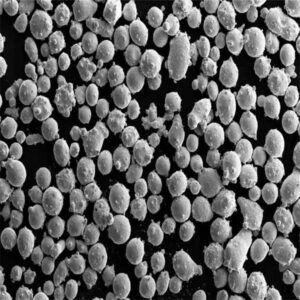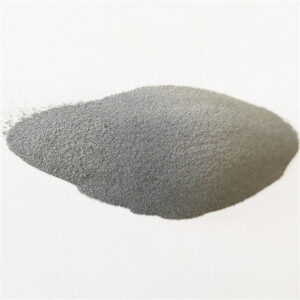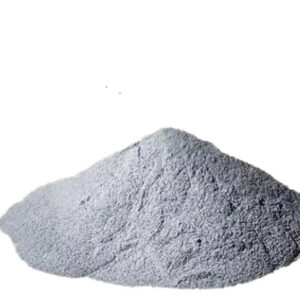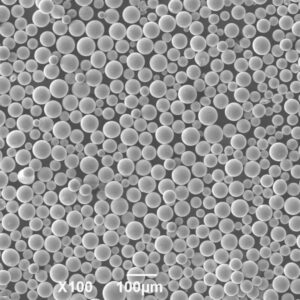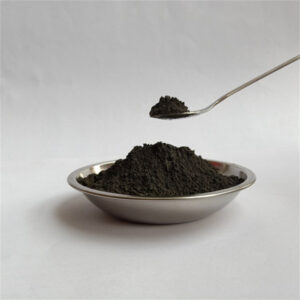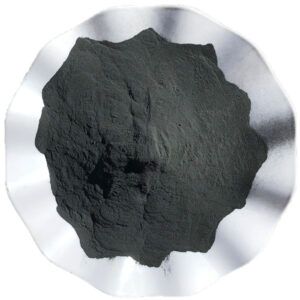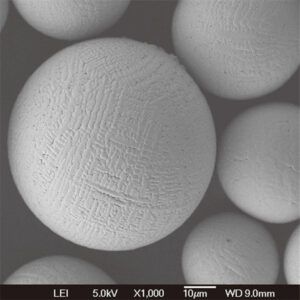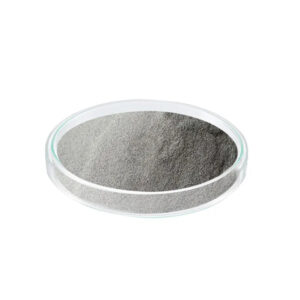Overview of Metal Materials for 3D Printing
3D printing, also known as additive manufacturing, allows for the creation of complex metal parts directly from 3D CAD data. In contrast to traditional subtractive methods like CNC machining, 3D printing builds up parts layer-by-layer without the need for dedicated tooling or fixtures.
Metal 3D printing opens up new possibilities for producing customized, lightweight, and high-performance metal components with complex geometries. Aerospace, automotive, medical, and defense industries are increasingly adopting metal 3D printing for end-use production applications.
However, not all metals can be easily 3D printed. The most commonly used metal materials are aluminum, titanium, nickel, stainless steel, and cobalt-chrome alloys. The choice of material depends on the specific application requirements – strength, corrosion resistance, high temperature performance, biocompatibility, etc.
This comprehensive guide provides a detailed overview of various metals and alloys used in 3D printing. We discuss the composition, properties, applications, and pros and cons of popular metal materials to help you select the right material for your needs.
Key Takeaways on Metal 3D Printing Materials:
- Aluminum alloys offer good strength-to-weight ratio and corrosion resistance at lower costs.
- Titanium alloys provide excellent strength with low density and biocompatibility for medical uses.
- Stainless steels have high strength and corrosion resistance for tooling and functional parts.
- Nickel superalloys can withstand high temperatures making them suitable for aerospace.
- Cobalt-chrome alloys provide hardness, wear resistance and biocompatibility for dental and medical implants.
- Material choice depends on mechanical requirements, post-processing needs, costs and 3D printing method suitability.
- Part orientation, support structures, layer thickness and build parameters need to be optimized for each metal material.
- Post-processing like hot isostatic pressing can enhance final part properties.
Composition of Metal Materials for 3D Printing
The composition of alloying elements in metals and the microstructure provides specific properties and determines the suitability of the material for 3D printing.
Aluminum Alloys
Aluminum is known for its low density and good corrosion resistance. Wrought and cast aluminum alloys are most commonly used:
| Alloy Type | Compositions |
|---|---|
| 6061 | Mg, Si, Cu, Cr |
| 7075 | Zn, Mg, Cu, Cr |
| A356 | Si, Mg, Cu |
6061 offers better corrosion resistance while 7075 has higher strength. A356 is a castable alloy.
Titanium Alloys
Titanium has high strength-to-weight ratio and bio-compatibility but can be difficult to machine. Common alloys:
| Alloy Type | Compositions |
|---|---|
| Ti-6Al-4V | Al, V |
| Ti 6242 | Al, Sn |
Ti-6Al-4V offers the best balance of properties and is the most extensively used titanium alloy.
Stainless Steels
Stainless steels contain Cr and Ni for good corrosion resistance. Some alloys used:
| Alloy Type | Compositions |
|---|---|
| 316L | Ni, Mo, Cr |
| 17-4PH | Ni, Cr, Cu |
| 303 | S, Cr, Ni |
316L provides excellent corrosion resistance. 17-4PH is precipitation hardening martensitic stainless steel.
Nickel Superalloys
Nickel superalloys have high strength and withstand extreme temperatures. Common alloys:
| Alloy Type | Compositions |
|---|---|
| Inconel 718 | Ni, Cr, Fe, Nb, Mo |
| Inconel 625 | Ni, Cr, Mo, Nb |
Inconel 718 is extensively used in aerospace applications. Inconel 625 has excellent corrosion resistance.
Cobalt-Chrome Alloys
Cobalt-chrome alloys provide hardness, wear resistance and biocompatibility. Two main grades used:
| Alloy Type | Compositions |
|---|---|
| CoCrMo | Co, Cr, Mo |
| CoNiCrMo | Co, Ni, Cr, Mo |
Both provide similar properties. CoCrMo is more widely used.
Mechanical Properties of Metal Materials
The mechanical properties of the metal determine the performance of the 3D printed part. Below are typical properties of commonly used alloys:
| Metal Material | Yield Strength (MPa) | Tensile Strength (MPa) | Elongation (%) | Density (g/cm3) |
|---|---|---|---|---|
| AlSi10Mg | 230 | 450 | 8 | 2.68 |
| Ti-6Al-4V | 880 | 930 | 10 | 4.43 |
| 316L Stainless Steel | 290 | 515 | 40 | 8 |
| Inconel 718 | 1138 | 1275 | 12 | 8.19 |
| Inconel 625 | 550 | 860 | 35 | 8.44 |
| CoCrMo | 655 | 860 | 8 | 8.3 |
- Aluminum alloys offer medium strength with excellent elongation.
- Titanium alloys provide very high strength considering their low density.
- Stainless steel 316L offers good ductility and excellent corrosion resistance.
- Inconel superalloys are extremely strong but less ductile.
- Cobalt chrome has high hardness making it difficult to machine after printing.
Applications of Metal 3D Printing
The choice of material depends on the end-use application and the specific design requirements:
| Industry | Applications | Materials Used |
|---|---|---|
| Aerospace | Turbine blades, structural brackets | Titanium alloys, Inconel, Stainless steel |
| Automotive | Custom parts, tooling | Aluminum, Low alloy steel |
| Medical | Implants, surgical instruments | Titanium, Cobalt-chrome |
| Oil & Gas | Valves, pumps, tooling | Stainless steel, Inconel |
| Defense | Complex parts, lightweight armor | Aluminum, Titanium |
Some typical applications taking advantage of 3D printed metal parts:
- Aerospace: Complex and lightweight brackets and structural components
- Automotive: Customized parts for motorsports applications
- Medical: Patient-specific implants and surgical instrumentation
- Oil and gas: High-performance valves and pumps for pipelines
- Defense: Detailed and lightweight components for vehicles and equipment
Pros and Cons of Key Metal Materials
Here is a comparison of the advantages and limitations of popular metal alloys used in 3D printing:
| Material | Pros | Cons |
|---|---|---|
| Aluminum 6061 | Low cost, good corrosion resistance | Lower strength |
| Aluminum 7075 | High strength-to-weight ratio | Difficult to weld |
| Titanium Ti-6Al-4V | High strength, low density | Expensive material |
| Stainless Steel 316L | Excellent corrosion resistance | Lower strength than alloys |
| Inconel 718 | Withstands extreme temperatures | Challenging to machine |
| Cobalt Chrome | Excellent wear and biocompatibility | Limited ductility |
Suppliers of Metal 3D Printing Materials
Many companies provide metal powders and wire specifically for 3D printing processes:
| Material | Key Suppliers |
|---|---|
| Aluminum Alloys | AP&C, Sandvik, HC Starck |
| Titanium Alloys | AP&C, TLS Technik, Tekna |
| Stainless Steels | Sandvik, Carpenter Additive |
| Nickel Superalloys | AP&C, Sandvik, Praxair |
| Cobalt Chrome Alloys | AP&C, Sandvik, SLM Solutions |
Factors like powder quality, consistency, particle shape and size distribution affect final part properties and print process stability. Reputed suppliers provide well-characterized and customized alloys tailored for AM.
Cost Analysis of Metal 3D Printing Materials
Material costs constitute a significant portion of the final part cost in metal 3D printing. Below are approximate price ranges:
| Material | Cost per Kg | Cost per cm3 |
|---|---|---|
| Aluminum Alloys | $50-$150 | $0.15-$0.45 |
| Titanium Alloys | $350-$1000 | $1.00-$3.00 |
| Stainless Steels | $90-$250 | $0.25-$0.75 |
| Inconel 718 | $350-$600 | $2.50-$4.50 |
| Cobalt Chrome | $500-$1200 | $3.50-$8.50 |
- Titanium and cobalt chrome alloys are the most expensive while aluminum is moderately priced.
- Material costs scale with build volume – larger parts in expensive alloys require higher material budgets.
- Optimization to reduce support waste and post-processing can help lower effective material costs.
Standards for Metal Powders
To ensure repeatable high quality prints, metal powders used in 3D printing must meet certain minimum standards:
| Property | Key Standards |
|---|---|
| Particle size distribution | ASTM B822, ISO 4490 |
| Flowability | ASTM B213, ISO 4490 |
| Apparent density | ASTM B212, ISO 3923 |
| Tap density | ASTM B527, ISO 3953 |
| Chemical composition | ASTM E1479, OES analysis |
- Powder quality influences final part properties like density, surface finish and mechanicals.
- Spherical powders with controlled particle size distribution have excellent flowability.
- Consistent chemistry and density provide process stability and repeatability.
3D Printing Methods for Metals
Various 3D printing technologies can process metals and alloys:
| Method | Materials | Key Benefits | Limitations |
|---|---|---|---|
| Powder Bed Fusion | Most alloys | Excellent accuracy and surface finish | Slow build rates |
| Directed Energy Deposition | Most alloys | Built-up features on existing parts | Lower resolution |
| Binder Jetting | Stainless steel | High speed printing | Lower strength |
| Metal Extrusion | Limited alloys | Low equipment costs | Lower density |
- Powder bed technologies like DMLS offer the highest resolution and accuracy.
- Binder jetting works with a wider range of alloys but has lower final part strength.
- Directed energy deposition allows printing of large near-net shape parts.
Post-Processing Requirements
As-printed metal parts typically require post-processing to achieve desired properties:
| Post-Process | Purpose | Materials Used |
|---|---|---|
| Support removal | Remove support structures | Alloys with thin, fragile supports |
| Stress relieving | Reduce residual stresses | All alloys |
| Hot isostatic pressing | Increase density, enhance properties | All alloys |
| Surface finishing | Improve surface roughness | All alloys |
| Heat treatment | Modify microstructure | Age-hardenable alloys like aluminum |
| Machining | Accurate dimensions and surface finish | Most alloys |
- Stress relieving heat treatment is recommended for all alloys to prevent distortion.
- HIP treatment can significantly enhance final material properties.
- CNC machining provides dimensional accuracy and surface finish.
How to Choose a Metal Material for 3D Printing
Follow these guidelines for selecting an optimal metal material:
- Match the alloy properties to design requirements like strength, hardness, thermal resistance etc.
- Consider post-processing needs – some alloys like Inconel are challenging to machine.
- Evaluate part size and geometry – some metals like aluminum are better for larger parts.
- Assess production volumes – prototype in cheaper material then switch to higher performance alloys.
- Account for material availability and costs early in the design stage.
- Work closely with your 3D printing service provider to select the best material.
- Optimize print parameters like orientation and layer thickness based on the specific alloy chosen.
- Perform test builds and material characterization tests before starting production.
FAQs
Q: Which metal alloy has the highest strength for 3D printing?
A: Inconel superalloys like Inconel 718 have the highest tensile strength but are less ductile. Titanium Ti-6Al-4V has the highest strength-to-weight ratio.
Q: Are parts 3D printed in stainless steel corrosion resistant?
A: Yes, 316L and other stainless steel alloys maintain their excellent corrosion resistance after 3D printing.
Q: What is the most commonly used titanium alloy in 3D printing?
A: Ti-6Al-4V is the most popular titanium alloy, comprising 90% of all titanium 3D printing. It offers the best all-round properties.
Q: Which aluminum alloy is best for 3D printing?
A: 6061 and 7075 are most widely used, with 6061 offering good corrosion resistance at lower cost, and 7075 chosen for high-strength structural applications.
Q: Are post-processing steps mandatory for metal 3D printed parts?
A: Post-processing like support removal, stress relieving and surface finishing is highly recommended for optimal material properties and performance.
Q: Which 3D printing process works with the widest range of metal alloys?
A: Binder jetting and directed energy deposition can work with most alloys but powder bed fusion produces higher resolution parts.
Q: How does part accuracy compare between machining and 3D printing of metals?
A: CNC machined parts allow tighter tolerances and better surface finish than 3D printed metals. However, 3D printing enables more complex geometries.
Q: Which metal 3D printing process has the fastest build speeds?
A: Binder jetting can achieve the highest print speeds, building parts up to 10 times faster than powder bed fusion processes.

